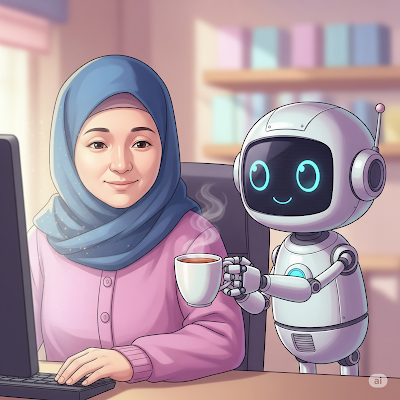The Future of Large Language Models: What’s Coming Next in AI
Large Language Models (LLMs) have revolutionized how we interact with technology. From ChatGPT to Claude, these AI systems are reshaping industries and changing our daily lives. But what does the future hold? Let’s explore the exciting developments on the horizon.
What Are Large Language Models?
Large Language Models are AI systems trained on massive amounts of text data. They can understand context, generate human-like responses, and perform complex tasks ranging from writing code to analyzing data. Think of them as incredibly intelligent assistants that have read millions of books and can help you with almost anything.
Current State of LLMs in 2025
Today’s LLMs are already impressive. They can:
- Write and debug code in multiple programming languages
- Translate languages with near-human accuracy
- Analyze complex data and provide insights
- Create content from articles to marketing copy
- Answer questions on virtually any topic
But we’re just scratching the surface of what’s possible.
5 Major Trends Shaping the Future
1. Multimodal Capabilities
The next generation of LLMs won’t just understand text—they’ll seamlessly work with images, videos, audio, and even 3D models. Imagine describing a scene and having an AI generate not just text, but also images, sound effects, and video clips to match.
Real-world impact: Designers, content creators, and educators will be able to create rich multimedia experiences with simple text prompts.
2. Smaller, More Efficient Models
While current LLMs require massive computing power, researchers are developing techniques to compress these models without losing performance. This means:
- LLMs running directly on your smartphone
- Faster response times
- Lower costs for businesses
- Reduced environmental impact
3. Domain-Specific Expertise
General-purpose LLMs are great, but the future belongs to specialized models. We’ll see:
- Medical LLMs that can assist doctors with diagnoses
- Legal LLMs trained on case law and regulations
- Financial LLMs for market analysis and trading
- Educational LLMs customized for different learning styles
4. Better Reasoning and Planning
Current LLMs sometimes struggle with complex multi-step problems. Future models will have enhanced reasoning capabilities, allowing them to:
- Break down complex tasks into manageable steps
- Verify their own work and correct mistakes
- Plan long-term strategies
- Handle mathematical and logical problems more accurately
5. Enhanced Safety and Alignment
As LLMs become more powerful, ensuring they’re safe and aligned with human values becomes crucial. We’ll see:
- Better content filtering and bias detection
- More transparent decision-making processes
- Improved fact-checking capabilities
- Ethical AI frameworks built into the models
Industry Applications: Where We’re Headed
Healthcare
LLMs will assist in early disease detection, personalized treatment plans, and drug discovery. Imagine an AI that can analyze your symptoms, medical history, and latest research to suggest the best treatment options.
Education
Personalized AI tutors will adapt to each student’s learning pace and style. No more one-size-fits-all education—every student gets a customized learning experience.
Software Development
AI pair programmers will become indispensable, handling routine coding tasks while developers focus on architecture and creative problem-solving. Development time could be cut in half.
Customer Service
Gone are the days of frustrating chatbots. Future LLMs will provide empathetic, context-aware customer service that rivals human agents—available 24/7 in every language.
Creative Industries
Writers, artists, and musicians will collaborate with AI to push creative boundaries. The AI won’t replace human creativity but will amplify it.
Challenges We Must Address
Despite the exciting possibilities, several challenges remain:
Hallucinations: LLMs sometimes generate false information confidently. Future models need better fact-checking mechanisms.
Bias: Training data reflects human biases. We need diverse datasets and better training methods to create fair AI systems.
Energy Consumption: Training large models requires enormous computing power. We need more efficient algorithms and sustainable practices.
Privacy Concerns: As LLMs process more personal data, protecting user privacy becomes paramount.
Job Displacement: While AI creates new opportunities, it also disrupts traditional jobs. Society needs to prepare for this transition.
What This Means for You
Whether you’re a developer, business owner, student, or professional, LLMs will impact your life:
- Learn to work with AI: Understanding how to effectively use LLMs will be a crucial skill
- Stay updated: The field evolves rapidly—continuous learning is essential
- Think creatively: Focus on uniquely human skills that complement AI
- Embrace change: The future belongs to those who adapt
The Road Ahead
The future of Large Language Models is incredibly promising. We’re moving toward AI systems that are:
- More capable and intelligent
- More efficient and accessible
- More specialized and useful
- Safer and more aligned with human values
The key is ensuring this powerful technology benefits everyone, not just a select few.
Final Thoughts
We’re living through a technological revolution comparable to the invention of the internet. Large Language Models are not just tools—they’re partners in innovation, education, and problem-solving.
The future isn’t about AI replacing humans; it’s about humans and AI working together to solve the world’s biggest challenges. And that future is closer than you think.
What are your thoughts on the future of AI? How do you see LLMs impacting your field? Share your perspective in the comments below!
Related Topics
- Artificial Intelligence
- Machine Learning
- Natural Language Processing
- Tech Innovation
- Future Technology
Reading Time: 8 minutes
About the Author: Prafull Kumar is a tech enthusiast and educator passionate about making complex technology accessible to everyone. Follow for more insights on AI, web development, and emerging technologies.

Leave a Reply